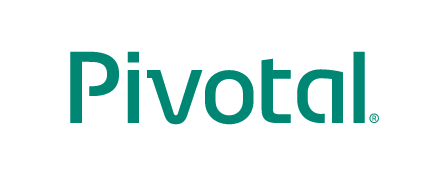Before you finally embark on your digital transformation in 2018, do these things first.

You’ve got a little break ahead of yourself now, at the end of the year. Time to relax your mind of all those color-coded Excel spreadsheets going over IT project statuses, stop worrying about the most recent Windows patches, and finally figure out what “blockchain” is. But come early next month, you’ll need to actually plan out what you’ll be suffering through for the rest of the year. Rather — pardon me, there — how you’ll be helping out the business.
Nowadays, it’s the same thing every year, time for more digital transformation! Move the plans forward! While “digital” was once the domain of “social media” and better marketing, in recent years responsibility has grown from just the CMOs responsibility to the CIOs as well. One recent survey found that the IT department lead in digital transformation responsibility in 34% of organizations, trailed only slightly by marketing at 30%. Clearly, the IT department is going to play a key role in most organization’s digital transformation.
Don’t get captured
While you’re running through the planning of what to do, it’s a good time to pay down the “debt” you have in IT. This isn’t monetary debt, it’s just a metaphor for things that, if you have too much of them, prevent you from doing anything. This can be poor code you decided to let slip into production to make dates, OS upgrades you wanted to avoid because they’d surely result in downtime, or any number of things that should get done, but you decided to just punt on because, let’s face it, “reasons.”
But there’s one type of debt in particular that will immediately tank whatever digital transformation snows down on you this coming January: portfolio debt.
A “portfolio” in this context is composed of all the services and applications IT is providing and running. It could be public cloud based SaaSes, on-premises Exchange servers, developer services to support all those mobile apps — everything. That’s a huge collection of things: it’s the IT department.
SaaSify like a maniac
To focus, first ensure that you’re moving as many applications to SaaSes as possible. There may be very good reasons to run your off-the-shelf applications on-premises, but there’s likely not that many. Some business operations like HR systems seem particularly well suited to run in the public cloud. There’s also your “collaboration” software: presentations, spreadsheets, documents, email, and calendaring.
The ability to collaborate on documents and presentations online instead of emailing around track changes documents will boost all sorts of productivity. If you have some excuse for running that kind of toolchain on-premises, ruthlessly ask why until you find a reason to keep them on-premises. And, then, move them to a SaaS anyway.
This urgency to move to SaaS may seem like a crazy focus, but there’s a shocking amount of companies that have yet to move. In early 2016, Gartner estimated that under 10% of publicly listed enterprises were running their email and collaboration toolchain in the public cloud. Thankfully, they’re also predicting a rapid rush to cloud in 2018, though: “we expect 40% to 50% of business users to have moved their core collaboration and communications systems to cloud platforms.” Just make sure you’re on the right side of that rush.
Choose any quadrants you like, but just choose one
Once you’ve cleared out all this on-premises underbrush, take a look at your more bespoke services and custom-written software. This part of your IT portfolio should be the most valuable assets you have: the unique services and applications that run your business and distinguish it from competition. In an ideal state, all of this custom IT is what transforms your business into a software-defined business. Voilà! You’ve digitally transformed!
If all of these services are not constantly gardened, you’ll end up with a big plot of land full of weeds, impassible. They’ll be otherwise unusable and will eventually need to be burnt to the ground to do anything. Once you get behind, you start forgetting how to operate and evolve each service. Then, most pernicious, as the service starts to degrade, in anger, funding gets cut and cut until there’s not enough money to actually fix the problems. “Starving the beast” usually results in famine.
There are innumerable, quadrant-driven ways to prioritize which weeds to pick. If you find yourself saddled down by “legacy” services that are preventing you from moving, don’t worry so much which method you use to evaluate and prioritize the portfolio. Instead, worry about actually doing the work. People give lip-service to following a process, and yet I constantly talk with enterprises who feel stuck in a legacy swamp. Just pick a framework and focus on actually doing the work week-to-week.
When it comes to addressing debt, there are no silver bullets, just the tedious, never-ending work of actually doing what your process prescribes.
In addition to whatever flashy, new applications you’ll work in 2018, make sure to spin up a quiet, plodding, but incredibly enabling process of addressing portfolio debt. If anything, it’ll give your enterprise architects something to do! Kidding aside — who doesn’t love their EAs?! — don’t get stuck in analysis paralysis about how to actually go about it, just start, study the result, and correct the process as needed. But above all else, start.

Change is the only constant, so individuals, institutions, and businesses must be Built to Adapt. At Pivotal, we believe change should be expected, embraced, and incorporated continuously through development and innovation, because good software is never finished.

In 2018, Clear Out Your Portfolio Underbrush Before You Have to Burn it All Down was originally published in Built to Adapt on Medium, where people are continuing the conversation by highlighting and responding to this story.
About the Author























